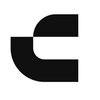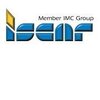Filter interviews by
Zecha Precision Tools CAD Engg Interview Questions, Process, and Tips
Zecha Precision Tools CAD Engg Interview Experiences
2 interviews found
I applied via Walk-in and was interviewed in May 2021. There were 3 interview rounds.
Interview Questionnaire
4 Questions
- Q1. 1 what are diff types of manufacturing process
- Ans.
Manufacturing processes are methods used to transform raw materials into finished products.
Casting
Machining
Forming
Joining
Additive manufacturing
Subtractive manufacturing
Powder metallurgy
Injection molding
Extrusion
Forging
- Q2. What are the machining process
- Ans.
Machining processes are used to remove material from a workpiece to create a desired shape or size.
Turning
Milling
Drilling
Grinding
Broaching
Sawing
Electrical Discharge Machining (EDM)
Laser Cutting
- Q3. What is stress concentration
- Ans.
Stress concentration is the phenomenon of localized stress in a material due to the presence of a geometric feature or a change in shape.
It occurs when there is a sudden change in the shape or geometry of a material.
It can lead to material failure or fracture.
Examples include sharp corners, holes, notches, and cracks.
It can be reduced by using fillets, chamfers, or other design modifications.
It is important to consider...
- Q4. Stress strain digram
Interview Preparation Tips
GD&T, machining process, solid edge ST 10
I applied via Company Website and was interviewed in May 2021. There were 3 interview rounds.
Interview Questionnaire
4 Questions
- Q1. Types of manufacturing process
- Ans.
Manufacturing processes are methods used to transform raw materials into finished products.
Casting
Machining
Forming
Joining
Additive manufacturing
- Q2. Types of machining process
- Ans.
Machining is a process of removing material from a workpiece to create a desired shape and size.
Turning
Milling
Drilling
Grinding
Broaching
Sawing
Electrical Discharge Machining (EDM)
Laser Cutting
- Q3. What is GD&T
- Ans.
GD&T stands for Geometric Dimensioning and Tolerancing. It is a system used to define and communicate engineering tolerances.
GD&T is a language used to communicate design intent and ensure parts are manufactured to the correct specifications.
It uses symbols and annotations to specify the allowable variation in form, orientation, and location of features on a part.
GD&T is commonly used in industries such as aerospace, a...
- Q4. What is stress concentraion
- Ans.
Stress concentration is the phenomenon of increased stress at a localized point in a material.
Occurs when there is a change in geometry or material properties
Can lead to material failure or fracture
Common examples include sharp corners, holes, and notches
Can be reduced through design modifications or material selection
Interview Preparation Tips
Skills evaluated in this interview
Top trending discussions






Interview questions from similar companies

I applied via Walk-in and was interviewed before Dec 2023. There were 3 interview rounds.
(2 Questions)
- Q1. Cad test and technical test
- Q2. Screen test and technical test
(2 Questions)
- Q1. Cad test and technical
- Q2. Screen test and technicak
(2 Questions)
- Q1. Work details and salary
- Q2. Joining details abd salary
Interview Preparation Tips

(2 Questions)
- Q1. What is stress strain curve
- Ans.
Stress strain curve shows the relationship between stress (force applied) and strain (resulting deformation) in a material.
It is a graphical representation of the behavior of a material under loading.
The curve typically consists of elastic, plastic, and fracture regions.
The slope of the curve in the elastic region is the material's Young's Modulus.
The ultimate tensile strength and yield strength can be determined from ...
- Q2. What is the process of production
- Ans.
The process of production involves converting raw materials into finished products through various stages.
Designing the product based on requirements and specifications
Selecting materials and components needed for production
Manufacturing the product using machinery and tools
Testing and quality control to ensure the product meets standards
Packaging and distribution of the finished product

I applied via Naukri.com and was interviewed in Jan 2024. There was 1 interview round.
(3 Questions)
- Q1. How validate your model?
- Ans.
To validate a CAE model, various methods can be used such as comparing simulation results with experimental data, conducting sensitivity analyses, and performing model correlation.
Compare simulation results with experimental data to ensure accuracy
Conduct sensitivity analyses to assess the impact of input parameters on the model
Perform model correlation by comparing predicted behavior with real-world observations
Valida...
- Q2. How define boundary?
- Ans.
Boundary is the limit or edge of a system or object.
Boundary defines the extent or scope of something.
It separates one system or object from another.
Boundaries can be physical, such as walls or fences, or conceptual, such as rules or regulations.
In engineering, boundaries are often defined to specify the limits within which a system or component operates.
For example, in CAE analysis, boundary conditions are set to defi
- Q3. What are parameters you check
- Ans.
Parameters checked by a CAE Engineer
Material properties
Boundary conditions
Mesh quality
Convergence criteria
Simulation results
Interview Preparation Tips
Skills evaluated in this interview

Java, Sring Boot, JPA, Oracle, Java1.8
(4 Questions)
- Q1. NA, NA, NA, NA, Na
- Q2. NA, NA, NA, NA, NANanana
- Q3. Na, Na, Na, Na .,Na
- Q4. NANANANANN NANANA NA NA AN

I applied via Newspaper Ad and was interviewed in Jul 2023. There were 5 interview rounds.

(2 Questions)
- Q1. Diagram and meachine drawing
- Q2. Using some of meachine production
(1 Question)
- Q1. Knowledge improve and experience
More questions and asking skills
(1 Question)
- Q1. Some of asking questions
Interview Preparation Tips
- Auto cad

Mechanical Engg. Design Interview Questions & Answers
Tech Mahindraposted on 24 Nov 2022
I applied via Naukri.com and was interviewed in Oct 2022. There was 1 interview round.
(10 Questions)
- Q1. Explain Sheet metal fabrication processes
- Ans.
Sheet metal fabrication processes involve various techniques to shape and form sheet metal into desired products.
Cutting: Techniques like shearing, laser cutting, and waterjet cutting are used to cut sheet metal into desired shapes.
Bending: Sheet metal is bent using techniques like press brake bending or roll forming to create angles and curves.
Forming: Processes like deep drawing, hydroforming, and stamping are used t...
- Q2. Draw shear for and Bending Moment Diagram for the Given Drawing (Cantilever Beam)
- Ans.
Draw shear and bending moment diagrams for a cantilever beam.
Calculate reactions at the support
Determine the equation of the shear force diagram
Determine the equation of the bending moment diagram
Plot the diagrams using the equations
Check for accuracy and consistency
- Q3. How do you give bending Allowances
- Ans.
Bending allowances are given to compensate for material stretching during bending process.
Bending allowances are added to the flat pattern of a sheet metal part before bending.
The amount of bending allowance depends on the material type, thickness, bend radius, and angle.
Bending allowances are typically specified in a table or chart provided by the manufacturer.
The bending allowance formula is: BA = (π/180) x R x (180 ...
- Q4. What are the Thickness used to Manufacture In your Industry
- Ans.
The thickness used to manufacture in the mechanical engineering design industry varies depending on the specific application and materials involved.
The thickness of components can range from very thin, such as sheet metal with thicknesses measured in millimeters, to thick structures like heavy machinery components with thicknesses measured in centimeters or even meters.
The choice of thickness is determined by factors s...
- Q5. Possible GD & T Diagram for the rectangular Box
- Ans.
Geometric Dimensioning and Tolerancing (GD&T) diagram for a rectangular box.
Use basic GD&T symbols such as perpendicularity, flatness, and parallelism to specify the dimensions and tolerances of the box.
Include datum features to establish a reference frame for the measurements.
Consider the functional requirements of the box, such as its ability to stack or fit with other components.
Use profile tolerance to control the ...
- Q6. How many symbols are there in GD and T
- Ans.
There are 14 symbols in GD&T (Geometric Dimensioning and Tolerancing).
GD&T uses symbols to communicate design requirements and tolerances.
These symbols are used to specify the shape, size, and orientation of features on a part.
Some common symbols in GD&T include concentricity, perpendicularity, flatness, and position.
Each symbol has a specific meaning and is used to ensure proper functionality and interchangeability of...
- Q7. Why do we Go for Flat Process in Sheet Metal fabrication
- Ans.
Flat process is preferred in sheet metal fabrication for ease of manufacturing and cost-effectiveness.
Flat process involves cutting and bending sheet metal in a single plane, reducing the need for complex tooling and machinery.
It also allows for easier handling and transportation of the sheet metal.
Flat process is more cost-effective than other processes like deep drawing or hydroforming.
Examples of products made using...
- Q8. How do you select a Flanges and where is it used
- Ans.
Flanges are selected based on factors like pressure rating, material compatibility, and application requirements.
Flanges are selected based on the pressure rating required for the specific application.
Material compatibility is crucial in selecting flanges to ensure they can withstand the intended environment.
Application requirements such as temperature, fluid type, and pipe size also influence flange selection.
Common t...
- Q9. Why do use Tolerances in CAD drawings
- Ans.
Tolerances are used in CAD drawings to ensure that the manufactured part meets the required specifications.
Tolerances help to control the variation in dimensions and ensure that the parts fit together properly.
They also help to reduce manufacturing costs by allowing for a range of acceptable dimensions rather than requiring every part to be made to exact specifications.
Tolerances can be specified for various dimensions...
- Q10. What are the Drawing softwares you're aware of And How much relevant experience you have in for each software
- Ans.
I am proficient in AutoCAD, SolidWorks, and CATIA with over 3 years of experience in each software.
Proficient in AutoCAD, SolidWorks, and CATIA
Over 3 years of experience in each software
Able to create 2D and 3D models, assemblies, and drawings
Familiar with GD&T and ANSI standards
Experience in designing mechanical components and systems
Ability to work with large assemblies and complex geometries
Interview Preparation Tips
- Mechanics of Materials
- Structural Analysis
- GD & T
- Types of Beams
- Sheetmetal Fabrication

I applied via campus placement at Kumaraguru College of Technology, Coimbatore and was interviewed before Nov 2023. There were 2 interview rounds.
Engineering core sub
(2 Questions)
- Q1. Stress and strain curve
- Q2. Material knowledge
Interview Preparation Tips
- Design Engineering


(5 Questions)
- Q1. What are your salary expectations?
- Q2. What is your family background?
- Q3. Tell me about yourself.
- Q4. Where do you see yourself in 5 years?
- Q5. Why should we hire you?
Interview Preparation Tips
Zecha Precision Tools Interview FAQs
Tell us how to improve this page.
Interview Questions for Popular Designations
- Mechanical Engg. Design Interview Questions
- CAD Design Engineer Interview Questions
- Cadd Engineer Interview Questions
- Auto CAD Engineer Interview Questions
- Sr. CAD Engineer Interview Questions
- Auto CAD Designer Interview Questions
- Junior CAD Engineer Interview Questions
- CAD CAM Engineer Interview Questions
- Show more
Interview Questions from Similar Companies
|
Junior Engineer
8
salaries
| ₹2 L/yr - ₹3.8 L/yr |
|
Purchase Executive
4
salaries
| ₹3.5 L/yr - ₹5 L/yr |
|
Executive
4
salaries
| ₹6.3 L/yr - ₹8.2 L/yr |
|
Associate Engineer
3
salaries
| ₹3 L/yr - ₹5 L/yr |
|
Senior Engineer
3
salaries
| ₹2.2 L/yr - ₹6.8 L/yr |

Kennametal

Sandvik Coromant

Iscar.in

Seco Tools
- Home >
- Interviews >
- Zecha Precision Tools Interview Questions >
- Zecha Precision Tools CAD Engg Interview Questions








